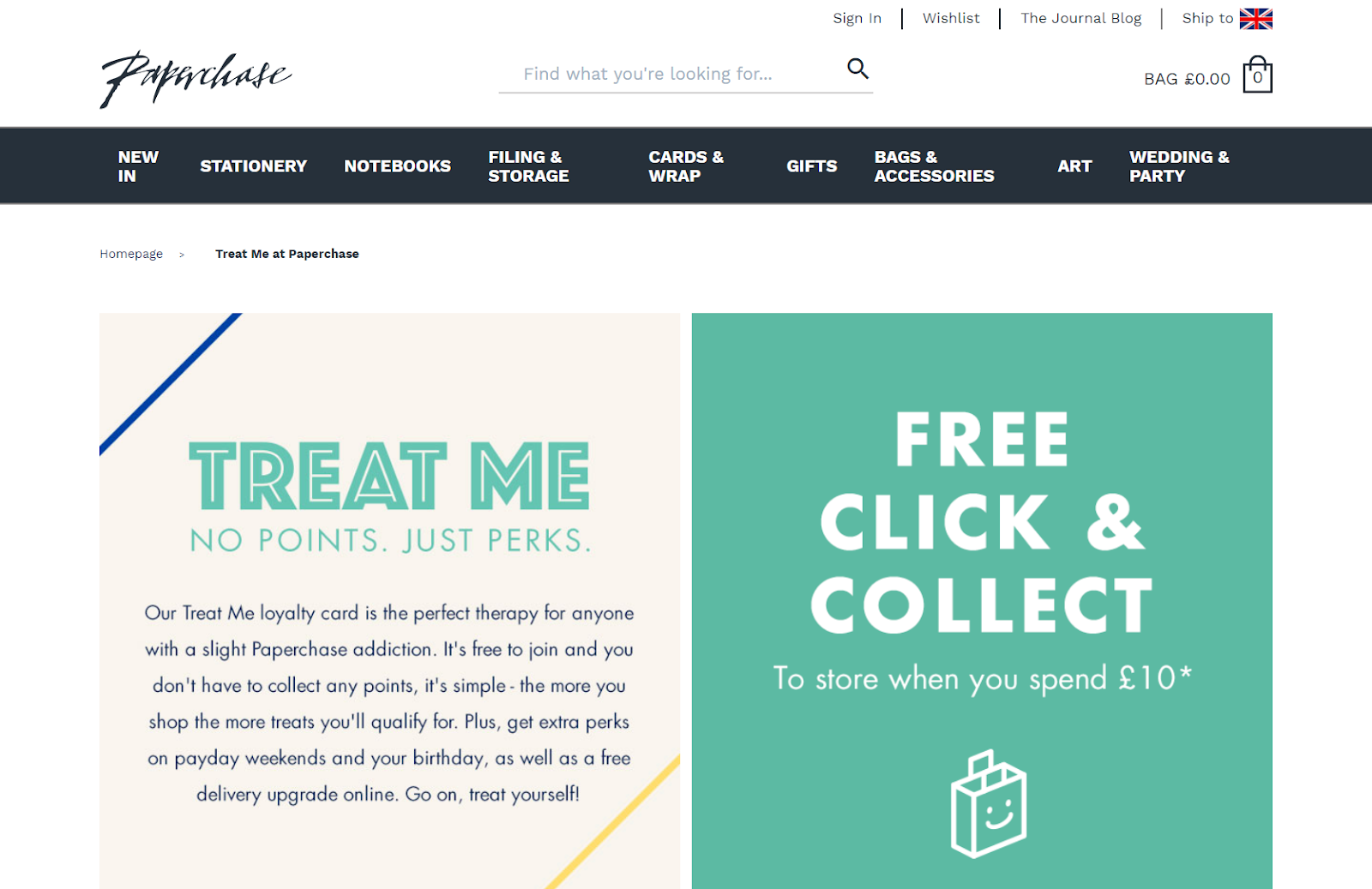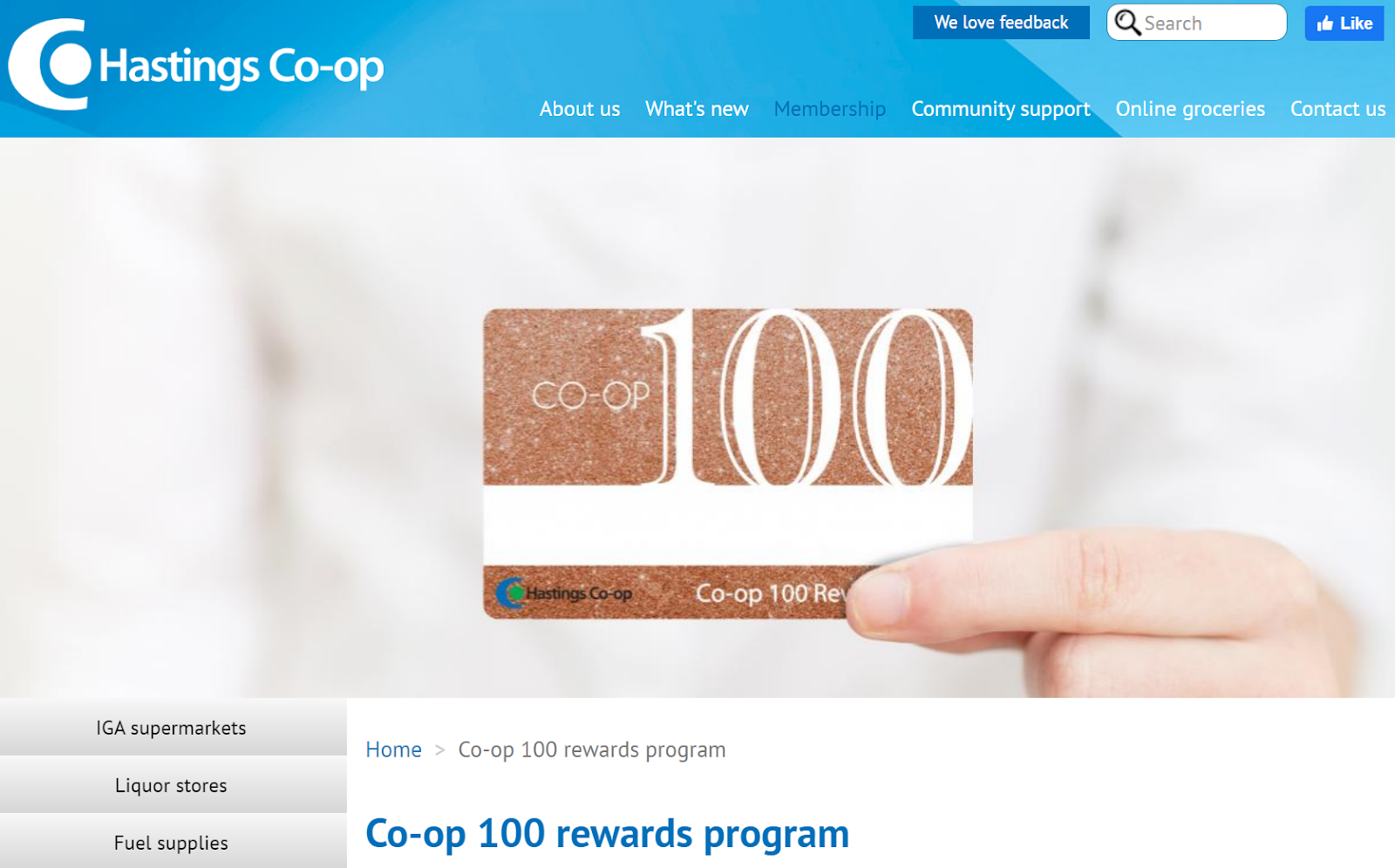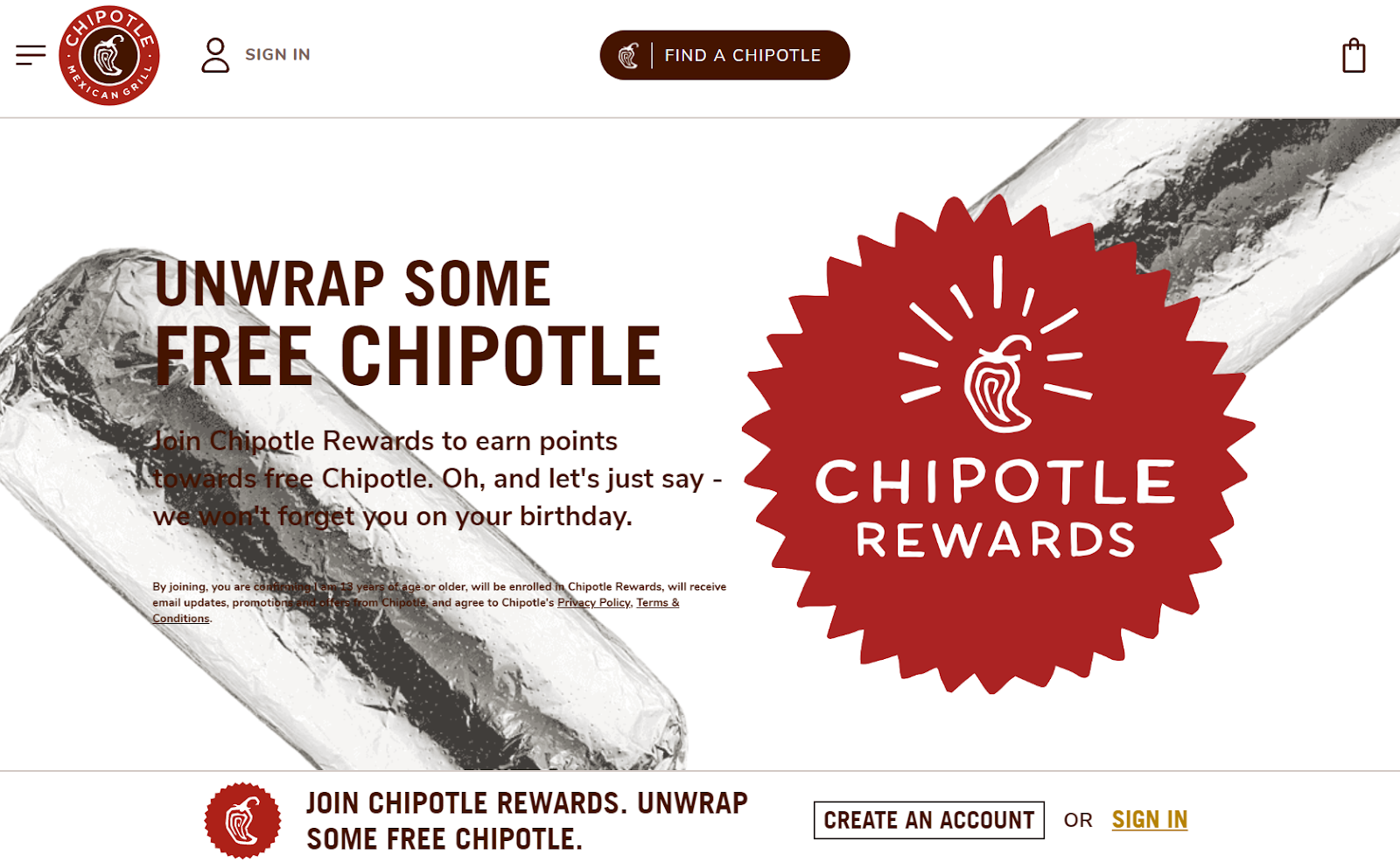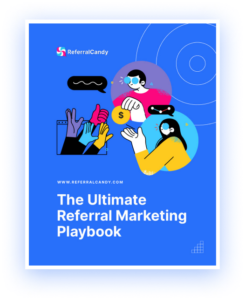Customer loyalty cards.
You know, those coffee-stained, frayed edge, hole-punch cards people use to score a free double-shot latte.
That’s them.
There’s a reason why every coffee shop, cafe, and bookstore has them (and why you’ve got a collection of these cardboard souvenirs in your ever-growing wallet)…
…they’re actually an incredibly powerful marketing tool.
They encourage customers to return to their favorite shop, cafe, or bookstore by promising deals and discounts for multiple purchases. And considering that it costs 500 percent more to get a new customer than to convince an old one to return to your shop, your business should be using loyalty cards too.
The good news is that these crusty old punch cards have since moved into the virtual world and are now offered via a digital app, never to be forgotten at home or damaged by the test of time.
In this post, I’m going to run you through what a customer loyalty card is, how they came about, how they work, and lastly a few key examples of businesses successfully integrating customer loyalty cards into their marketing strategies.
Let’s do it!
Click to Jump
What Is A Customer Loyalty Card?
Customer loyalty cards are used by businesses to encourage customers to return to their store for repeat business. When customers receive the loyalty card, they get a hole punched in it for every purchase they make. After a certain number of holes determined by the business, the customer receives a special deal or discount. This encourages customers to return to the business over and over again in order to receive the deal.
Customer loyalty cards are especially beneficial to businesses because they only require rewards after the customer has already spent money with the business a certain number of times.
These cards often exist in three different forms:
- paper punch cards,
- plastic loyalty cards,
- and digital loyalty wallets.
Customer loyalty cards also give business owners a peek into customer buying preferences that can help you determine which incentives will be most enticing to your customer base.
Analyzing these spending habits helps marketers and companies better strategize their marketing efforts, while the customer’s details are compiled into databases that can be targeted for future remarketing, retargeting measures, and increased customer retention efforts.
You see, those untidy little cards hidden away in people’s wallets aren’t as inferior as we first thought.
In fact, they are proving to be very influential on people’s buying patterns. The question is though, how did these marketing gems come about?
Let’s take a look.
History Of Loyalty Card Programs
Customer loyalty cards have been around longer than you might first think.
In fact, the first of their kind are believed to have originated as far back as the late 18th century. During this time, American shop owners and retailers began incentivizing future purchases with copper tokens they would hand out to their customers.
Jump forward to the late 19th century and we see that this trend continued. Although copper coins were replaced with less expensive tokens, like printed stamps, the concept remained the same.
Customer purchases were rewarded with exclusive customer rewards.
From there, the early 1900s brought us “box tops”. Box tops were just like stamps, however, they were printed on the product packaging rather than handed out on little pieces of printed paper.
Possibly the most famous example of box tops was those found on Betty Crocker products. They were printed on the cardboard packaging of her cake and muffins mixes. Customers would purchase a product, cut the token out, and send it in to earn savings on participating merchandise.
Sure, it may seem pretty old school by today’s standards, but back then it was super effective.
In fact, Betty Crocker set the framework from which many customer loyalty programs are now based.
Probably the next most well-known and influential loyalty program came to us in 1981, the widely renowned Frequent Fliers program. These days this hugely successful program has been rebranded as AAdvantage, the customer rewards program now boasting 67 million members.
And then the birth children of your favorite coffee shop’s punch cards raised their heads, the plastic loyalty card complete with a personally assigned customer number. These cards made monitoring customer-brand interactions much easier than their predecessors.
In fact, they are so good at their job they are still used widely today.
Which, my friend, lands us on the present day where the customer loyalty card has since moved digital.
Digital loyalty cards can now be accessed via apps downloaded on the customer’s mobile phones. When teamed with a retail point of sale (POS) system, you’ve got yourself the most sophisticated customer rewards program that’s ever existed before.
And with sophistication and convenience comes the easiest way for your customers to spend money with your company.
What Are Customer Loyalty Cards Used For?
Customer loyalty cards, just like any customer loyalty program, are used to encourage repeat business, brand loyalty, and, perhaps most importantly, additional purchases.
1. Repeat Customers Shop With Your Business Again And Again
Loyalty increases with each purchase that a customer makes from your business, further bolstering customer retention.
It’s true.
After a customer has made a purchase from your store, there is a 27 percent chance that they will return. This retention rate increases to 45 percent by their second return purchase and jumps to a healthy 54 percent by their third return purchase.
Many business owners jump on the opportunity to bring their customers back through easy-to-use loyalty cards.
2. Repeat Customers Are Easy To Sell To
eCommerce experts estimate that their average conversion rate lies somewhere between 1-3 percent, which, let’s face it, is pretty underwhelming.
An existing customer, however, converts at an estimated 60 to 70 percent.
As a shop owner, it makes sense to target the customers that are most likely to convert, which is exactly what a customer loyalty card helps you do.
3. Repeat Customers Spend More With Your Business
Repeat customers are literally gold to your business. Research shows that your most loyal 10 percent of customers spend three times more than your lower 90 percent.
And your top one percent most loyal customers spend a whopping five times more than your lower 99 percent.
So the easiest win that your business can make right now is to bring back existing customers and let them spend more money on your products or services.
Do Loyalty Cards Work?
Yes, customer loyalty cards work and the best part is they benefit everyone involved. In fact, 75 percent of customers claim they are more likely to make another purchase with a brand after receiving some sort of incentive. Not only will you be encouraging your customers to spend more and more often but you will also be rewarding them with great deals from a brand they love to shop with.
And, as an added bonus, loyalty cards are super convenient.
They make a sometimes clunky process more streamlined and easy to use. A simple scan of a plastic card is far easier than sending away cut out coupons from product packaging in the mail. And easier again is a customer’s ability to scan their phone screen, earning points through a digital app or loyalty card wallet.
Let’s take a more in depth look at why loyalty cards are beneficial to your business, how sometimes they fall short of their mark, and how you can rectify this.
Advantages And Disadvantages Of Loyalty Cards
As with any well-implemented marketing strategy, there are, of course, many pros but there are also some drawbacks.
Advantages of Loyalty Cards
Loyalty Cards Increase Frequency Of Sales
A loyalty card program encourages your customers to return to your shop more often through special offers, exclusive discounts, and attractive rewards.
And the more they shop with you the more they are likely to receive in return.
The best thing is you don’t really have to offer much in order to benefit. A small discount, member-exclusive product, or that free double-shot latte, that basically costs your business nothing, is often enough to inspire them to return again and again.
Loyalty Cards Furthers Your Brand’s Reach And Exposure
As we’ve seen, a loyalty card program is not only a great way to keep repeat customers, it’s also a very effective way of acquiring new customers. The promise of free rewards and exclusive deals proves to be irresistible, especially for something a customer was going to purchase anyway.
And if a customer enjoys your loyalty program (who doesn’t enjoy free stuff or discounts?) they are more likely to refer you to their friends and loved ones.
By creating a program worth bragging about, you are furthering your brand’s exposure to new markets that it may never have reached before.
Loyalty Cards Increase Product Awareness
Loyalty card programs can be used to encourage customers to try something new the next time they shop with you. This is particularly powerful for exposing your customers to a new line of products you have recently added to your range or moving more of a high-profit margin item that is making your business a decent amount of revenue.
Disadvantages Of Loyalty Cards
There are many advantages to loyalty cards, for both the business and the customer. However, some consumers feel loyalty cards violate their privacy or result in marketing strategies that are spammy and invasive.
Let’s now take a look at some of the disadvantages of loyalty cards.
Loyalty Cards Can Decrease POS Efficiency
Most customers accept that setting up a loyalty card is going to take a little time. However, things can get a bit frustrating when every time a purchase is made they have to fish around in their wallets or pull up an app on their phone.
This is not only somewhat frustrating for them, but it can also be frustrating for other customers waiting to be served as well.
Key takeaway: A good way to combat this is to make your physical cards easy to spot. Use unique and bright colors when designing them or ensure your brand’s logo is super easy to recognize. If your loyalty card program is digital, ensure the app is fast loading and a customer’s personal ID barcode or member number is easily accessed.
Loyalty Cards Can Incite Privacy Concerns
In order to sign up for a loyalty card program, customers have to be open to volunteering some of their personal information. For some consumers, their personal information isn’t worth surrendering for what your business will reward them with in return.
The most common concern is that your business will hand their details off to third parties or somehow their details will be released inadvertently.
Key takeaway: To lessen their worries, provide them with some form of reassurance, like a terms and conditions, that helps them know that their information is safe.
Loyalty Cards Can Become Spammy And Intrusive
While it’s important to stay in contact with your customers so that your brand is fresh on their minds, many businesses have stayed a little too in contact. In the age of overflowing email and messaging inboxes, unnecessary or too frequent contact can start to feel a little overwhelming and perhaps even intrusive.
Key takeaway: To make sure your customers’ aren’t feeling this way, try sending out emails or messages routinely, though on a less frequent basis. An email once a month or once a week, probably isn’t going to feel intrusive compared to every few days. Also, try sending valuable information incorporated within your messages, that way they feel it is worth their while to open and read it.
Where To Create Customer Loyalty Cards
Developing a successful customer loyalty card program not only relies on well thought out and effective marketing strategies but also on an eye-pleasing and practical card design.
Whether that be a punch card, plastic card, or phone app, they must all represent your brand well and allow your customers the ability to access your customer rewards with relative ease.
Here are a number of awesome create creating resources for you to check out:
Paper Loyalty Cards/Paper Punch Cards
- VistaPrint – VistaPrint offers a wide range of design and paper finishes for you to choose from at very affordable prices.
- GogoPrint – GogoPrint offers a variety of different print paper types and finishes with a number of free templates for you to choose from.
- Design Wizard – Design Wizard has a tonne of ready-made templates for you to choose from, 15,000 to be exact. Plus over 103 fonts to help you design the perfect loyalty card that matches your business’s style.
- My Creative Shop – My Creative Shop offers you a quick and easy way to design and print custom loyalty cards. Simply upload your design, pick your print paper, and place your order. Easy!
Plastic Loyalty Card
- Plastic Resource – Plastic Resource offer custom design loyalty cards that work with over 200 POS loyalty card systems including MICROS, Aldelo, PC America, and Future POS.
- Plastic Printers – Plastic Printers offer their customers a tonne of premade or custom designs, in a huge range of shapes and sizes.
Digital Loyalty Cards
- CandyBar – CandyBar is a digital loyalty reward and customer loyalty wallet. It’s a super fast and easy system to set up, with no POS integration required. And not only does CandyBar’s loyalty rewards program allow you to reward your customers with customizable rewards but it also gives you access to your repeat customers through downloadable customer data.
Companies Who Still Use Physical Cards Successfully
There are numerous examples of successful loyalty programs conducted using physical customer loyalty cards. These brands owe their success to how they managed to develop a relationship with their customers, and how their products and services have evolved with the needs of their clientele.
Let’s take a look-see!
1. Waterstones’ Plus Card

Waterstones is a British based brick-and-mortar and online book store based out of London. Their customer loyalty program offers:
- Three loyalty points for every £1 spent in-store or online.
- They reward you with Eco points when you opt not to take a plastic bag with your purchase.
- And they offer their loyalty members exclusive chances to read review books before they are even published.
2. Paperchase’s Treat Me Card

Paperchase’s Treat Me loyalty card doesn’t reward their loyalty members with points. Instead, they offer discounts and freebies.
Customers work closer to a ‘treat’ every time they make a purchase in-store or online. Here are the benefits of a Treat Me membership:
- A very healthy 15 percent off your first purchase (only redeemable in the first 28 days of signing up for the program).
- Spending £50 within a six-month period grants a £5 discount.
- £5 off on a customer’s birthday.
3. Hastings Co-op 100 Loyalty Rewards Card

The Co-op 100 card offers loyalty members points when they shop at many different establishments. Whether it be fueling up the car, buying groceries, grabbing a bottle of wine, or visiting the hardware store, members are rewarded with points for every purchase.
The program’s benefits include:
- A $15 reward voucher once 100 points are accumulated.
- One percent of what a loyalty member spends will be donated to local charities within their communities.
- Loyalty members also receive exclusive offers and discounts.
4. Chipotle Rewards Card

Chipotle has recently relaunched its loyalty reward program, offering new loyalty cards and in-app ordering capabilities. It’s a fairly straightforward program that rewards customers for every dollar they spend eating at Chipotle.
The loyalty program offers:
- 10 points per $1 spent.
- Hit 1250 points and loyalty members receive free Chipotle.
- Members also receive a gift on their birthday.
Conclusion
So what do you think?
Are you ready to turn that shabby paper punch card into a thing of marketing gold?
As we’ve seen, customer loyalty cards have many benefits.
They help companies increase customer retention, boost brand loyalty, make your loyalty program easy and convenient and allow your business to customize its offers.
Customize your rewards and get more regulars walking into your store or visiting your website — Try out CandyBar digital loyalty program free.


